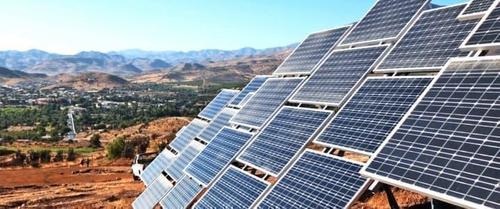Why Africa Hasn’t Kickstarted Its Renewable Energy Boom
Africa has a solar energy potential of as much as 1,000 GW and wind potential of 110 GW, not to mention 350 GW in hydropower potential and 15 GW of geothermal potential. And yet, all this huge potential remains largely untapped, even though solar and wind farms are getting so cheap, they are said to be on par with coal in some parts of the world. The situation will likely be surprising for those who only follow upbeat headlines, but people with some knowledge of how renewables actually work and how businesses in general work will not be surprised by the state of affairs in Africa—and other developing regions of the world.

Solar and wind farms generate electricity by capturing the light of the sun or the energy of the wind and converting it into electricity. This electricity then needs to be transmitted to where it will be used or stored. It is at this point that one of the challenges specific to Africa rears its head: transmission.
Many African countries simply lack transmission infrastructure extensive enough to accommodate utility-scale solar and wind installations economically. After all, a company cannot just build a solar farm at a random spot only because it is near the existing infrastructure. Solar and wind farms require optimal conditions to perform well.
And the problem is not confined to utility-scale installations either, according to Intelligent Power Generation’s chief executive Toby Gill. Gill spoke to Oilprice about the renewables challenge for African countries and noted the example of Kenya—one of the African countries with a well-developed grid. Despite this well-developed grid, Gill noted, Kenya was finding it challenging to realize its solar and wind potential, even via distributed mini-grids, which are more economical than expanding the central grid. The reason: it is still economically unviable.
“As of two years ago, the cost for a micro-grid provider to connect one household to their grid was around $1000 dollars,” Gill noted.
“When you then consider the average customer is paying less than $1-2 per day for their electricity use, the payback period for these energy companies becomes untenable.”
This is where it’s worth remembering that businesses, even renewable energy businesses delivering cheap power from the sun and the wind to households, need to turn in a profit to continue doing it. And to turn in a profit, these companies need customers capable of paying what this energy—plus the infrastructure that transports it to them—costs. Generation installations are cheap, Gill says, but they are not the only part of a grid involving renewables.
“It is not the p/kWh of wind, solar, or hydro that is the limiting factor, nor does it come down the mixture of wind, solar, energy storage and fuel-based power to deliver secure and reliable power,” he told Oilprice.
“It is the fact that the cost of deploying and installing the electricity infrastructure is too high relative to the revenue potential of the customers.”
And yet, with the downward trend in the industry, maybe at some point distributed generation will become more widely affordable. There are already successful projects in this segment in some parts of Africa, according to Fieldfisher partner and head of Africa Group, Cecily Davis.
Davis told Oilprice there are successful mini-grid projects in Uganda, Ethiopia, and Sierra Leone. Some of these projects are subsidized by the European Union and the UK and aim to bring reliable electricity to people who are currently living off the grid.
“Mini-grids are considered the most commercially viable option for servicing areas that are too expensive to consider extending the main grid to, but have enough demand and population density to support commercial viability,” Davis told Oilprice.
“They are proving to be extremely successful, however they lack the generating capacity of large wind or solar installations and are electrifying rural Africa one community at a time.”
One community at a time is certainly better than no community at no time, yet there have been ambitions to boost different African countries’ renewable power capacity at a larger scale. These ambitions have hit snags that have nothing to do with the cost of generation or transmission.
One of the snags is the oil curse. Fieldfisher’s Davis points to Algeria as a case in point: a country strongly dependent on its oil and gas revenues now trying to pivot to solar power and finding it hard, precisely because of its dependence on oil and gas revenues, which have plummeted during the pandemic. The case is very much identical to that of Saudi Arabia, which still has grand plans for a renewable energy shift, to be financed with oil money.
“It is unfortunate that a number of African countries, particularly in North and West Africa, have become so reliant on oil and gas that they find themselves in a bind when it comes to investing in renewable energy projects,” Davis said.
“If they scale back fossil fuels, they lose the tax revenue to pay for other infrastructure; if they maintain oil and gas production, that makes it harder for renewable energy to compete.”
Then there is the political challenge: a lot of African governments jumped on the renewables bandwagon and made ambitious plans to make their countries entirely reliant on renewable energy. However, they overshot the deadlines and were then forced to accept it could not happen as fast as they would like. The political factor makes investors wary of funding solar, wind, or hydropower projects in many parts of the continent.
Africa is flirting with renewable energy, and it’s finding out this is an expensive flirt. It could turn into a relationship, but for this, wealth needs to increase. Renewable energy is cheap to generate, but it is not that cheap to transmit and store if you have yet to build the grid—even the micro-grid—and the storage facilities for this.
Irina is a writer for Oilprice.com with over a decade of experience writing on the oil and gas industry